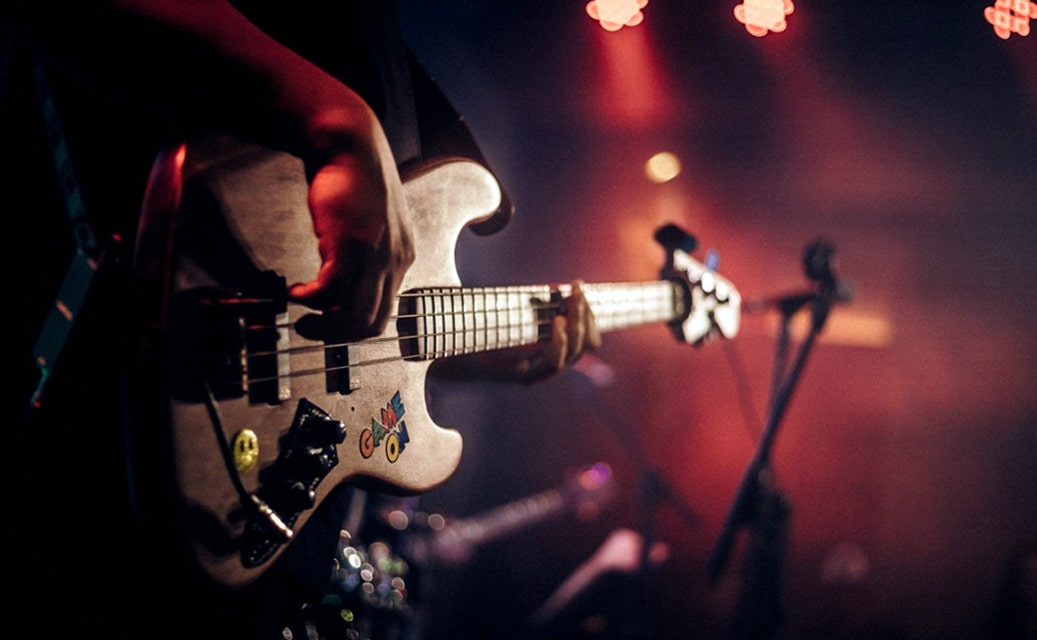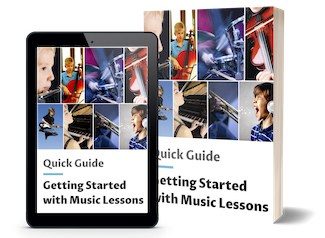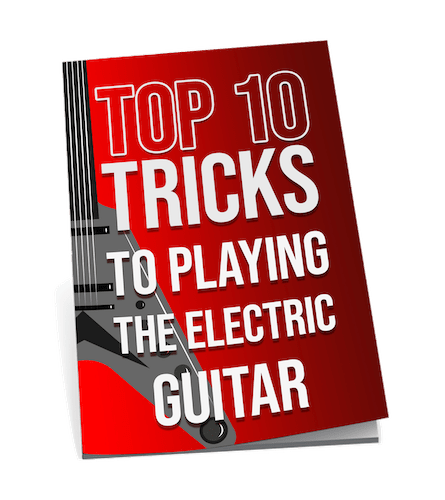Playing metal music as a beginner doesn’t have to mean breaking the bank or getting overwhelmed by endless guitar options. The best beginner metal guitars combine high-output pickups, solid tuning stability, and comfortable necks that make learning heavy riffs and solos enjoyable rather than frustrating.
I’ve spent countless hours testing guitars specifically for metal newcomers, and the good news is that today’s manufacturers create amazing instruments at every price point. Whether you’re drawn to classic shapes like the SG or prefer modern extended-range designs, there’s a perfect metal guitar waiting for you.
From understanding what hardware really matters to discovering which guitar shapes deliver that crushing tone you’re after, I’ll guide you through everything you need to know. My goal is to help you find an instrument that inspires you to keep playing and growing as a metal guitarist.
Key Features to Look for in a Beginner Metal Guitar
When I’m helping someone pick their first metal guitar, I focus on three main areas that make the biggest difference. The right pickup type will give you that heavy sound, while the body material and neck design directly affect how the guitar feels and plays.
Understanding Pickup Types for Metal
Humbucker pickups are my top recommendation for metal guitars. They produce a thick, powerful sound that handles high gain without the buzzing noise you get from other pickup types.
Single-coil pickups work great for clean tones but create unwanted feedback when you crank up the distortion. That’s why I always tell beginners to look for guitars with at least one humbucker in the bridge position.
Many beginner metal guitars now come with coil-splitting features. This lets you get single-coil sounds when you want them, giving you more versatility for different music styles.
The pickup output level matters too. Higher output pickups push your amp harder and create more natural distortion, which is perfect for metal tones.
Ernie Ball Everlast, 0.60mm Picks

FEATURES: Long-lasting and high quality
OTHER INFO: Made from super-robust Delrin
- With a medium-light, 0.60mm thickness for shimmering strummed chords
- Ergonomic and responsive
- The perfect pick that gives you the control you need
- May be too thin or flexible for some users' preferred playing styles
When you click ‘Check Price’, you’ll see there are loads of great places to buy this item. Our personal favorite is Sweetwater for the US, and Thomann and Gear4Music for the UK & Europe.
They are the largest music retailers, with excellent customer service, competitive prices, really fast shipping, and the longest guarantees.
The professional musician who wrote this article combined many things,
from the product build, manufacturer’s reputation through to feedback
from other users, to create our famous TedScore™.
Body Materials and Construction
I recommend looking for a solid body guitar made from either mahogany or basswood. Mahogany gives you warm, rich tones with great sustain, while basswood offers a brighter sound that cuts through the mix.
Mahogany body guitars tend to sound fuller and warmer. They’re heavier but provide excellent resonance for metal playing.
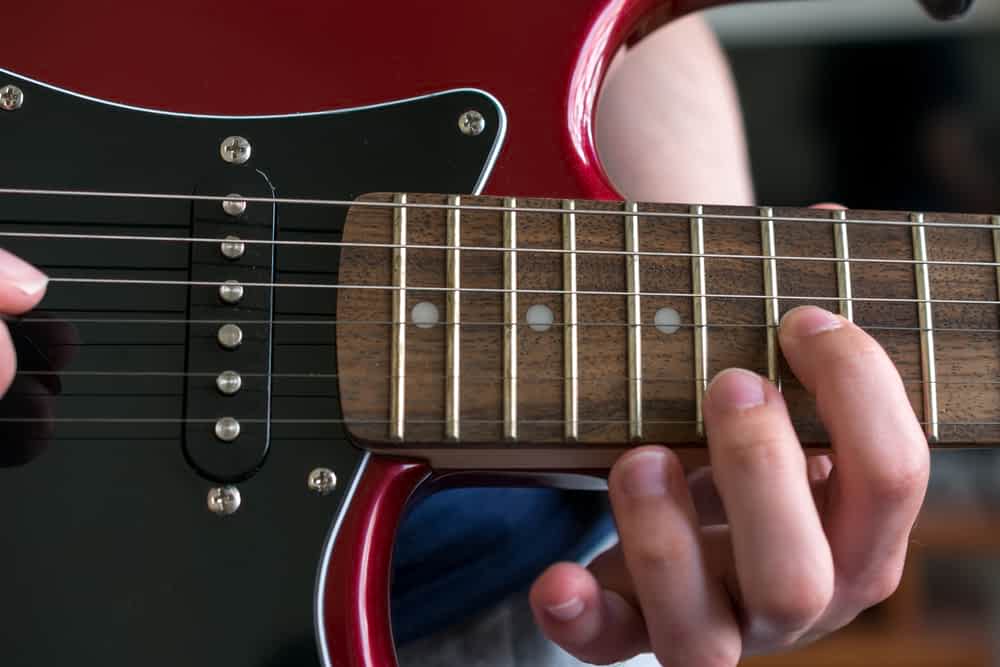
Basswood body guitars are lighter and produce a tighter, more focused sound. This wood works especially well for faster playing styles and palm-muted riffs.
Avoid hollow or semi-hollow bodies for metal. They can create feedback problems at high volumes and don’t give you the tight, controlled sound that metal requires.
The body shape affects comfort too. Look for guitars with contoured edges and cutaways that let you reach the higher frets easily.
Neck Profile, Scale Length, and Playability
Neck profile describes how thick the neck feels in your hand. I suggest trying a “C” or “D” shaped profile for beginners – they’re comfortable for most hand sizes.
Scale length affects string tension and playability. A 25.5″ scale length gives you tighter string tension, which works great for down-tuning and keeps your strings from getting too floppy.
Bolt-on neck construction is common on beginner guitars and works perfectly fine. A bolt-on maple neck provides brightness and sustain while being easy to repair if needed.
Set neck guitars offer better sustain but cost more. For beginners, bolt-on construction gives you great value and performance.
Look for guitars with 24 frets so you can access those screaming high notes. The fretboard material should feel smooth under your fingers – rosewood and maple are both excellent choices.
Top Beginner Metal Guitars Reviewed
I’ve tested dozens of metal guitars, and these four models consistently deliver crushing tones without breaking your budget. Each guitar brings unique strengths that make starting your metal journey easier and more enjoyable.
Ibanez GRG170DX
The Ibanez GRG170DX quickly became one of my favorite recommendations for new metal players. This guitar packs serious punch with its dual humbucker setup and lightning-fast neck.
Key Specifications:
- Body: Basswood
- Neck: Maple with 24 frets
- Pickups: Infinity R humbuckers
- Bridge: Fixed bridge
I love how the basswood body delivers those chunky low-end tones that metal demands. The fixed bridge keeps your tuning rock-solid, even during aggressive palm-muted riffing sessions.
The 24-fret neck gives you access to those soaring high notes for lead work. Metal players love Ibanez guitars for their slim necks, and the GRG170DX doesn’t disappoint.
The Infinity R pickups handle high-gain situations beautifully without getting muddy. I’ve found they cut through dense mixes perfectly, whether you’re playing rhythm or lead parts.
Ibanez GRG170DX GIO

DESIGNED FOR: Beginner
FEATURES: Frets: Jumbo
OTHER INFO: Infinity R bridge and neck pickups
- Durable construction
- Sleek black finish
- Variety of tones
- Maple neck for a smooth playing surface
- Easy sound manipulation
- Not as suitable for advanced players
- Lower quality than higher-end models
When you click ‘Check Price’, you’ll see there are loads of great places to buy this item. Our personal favorite is Sweetwater for the US, and Thomann and Gear4Music for the UK & Europe.
They are the largest music retailers, with excellent customer service, competitive prices, really fast shipping, and the longest guarantees.
The professional musician who wrote this article combined many things,
from the product build, manufacturer’s reputation through to feedback
from other users, to create our famous TedScore™.
Jackson JS32 and JS32 Rhoads
Jackson’s JS32 series gives you two killer options that scream metal from every angle. Both the standard JS32 and the pointy JS32 Rhoads deliver that aggressive Jackson sound I’ve come to expect.
The mahogany body paired with a maple neck creates the perfect tonal balance. You get warmth from the mahogany and snap from the maple that cuts through heavy distortion.
Jackson JS32 Features:
- High-output Jackson humbuckers
- 24 jumbo frets
- Compound radius fretboard
- Die-cast tuners
I particularly love the JS32 Rhoads for its iconic pointy shape that Randy Rhoads made famous. The extended upper horn gives you incredible upper fret access for shredding.
Both models feature Jackson’s high-output humbuckers that deliver crushing distortion tones. The simple control layout keeps things straightforward while you’re learning.
Jackson JS Series Rhoads MAH JS32, Amaranth Fingerboard, Natural

FEATURES: Compound Radius: 12"-16"
OTHER INFO: 24 Jumbo frets
- Competitive price within the average range.
- Mixed but generally positive user feedback on playability.
- Suitable for players with relatively small hands.
- Compound radius offers versatility for both chords and solos.
- D type neck profile favored by many, especially shredders.
- Some users find it slightly noisy in terms of pickups.
- Not recommended for complete beginners.
When you click ‘Check Price’, you’ll see there are loads of great places to buy this item. Our personal favorite is Sweetwater for the US, and Thomann and Gear4Music for the UK & Europe.
They are the largest music retailers, with excellent customer service, competitive prices, really fast shipping, and the longest guarantees.
The professional musician who wrote this article combined many things,
from the product build, manufacturer’s reputation through to feedback
from other users, to create our famous TedScore™.
Schecter Omen-6
Jackson’s JS32 series gives you two killer options that scream metal from every angle. Both the standard JS32 and the pointy JS32 Rhoads deliver that aggressive Jackson sound I’ve come to expect.
The mahogany body paired with a maple neck creates the perfect tonal balance. You get warmth from the mahogany and snap from the maple that cuts through heavy distortion.
Jackson JS32 Features:
- High-output Jackson humbuckers
- 24 jumbo frets
- Compound radius fretboard
- Die-cast tuners
I particularly love the JS32 Rhoads for its iconic pointy shape that Randy Rhoads made famous. The extended upper horn gives you incredible upper fret access for shredding.
Both models feature Jackson’s high-output humbuckers that deliver crushing distortion tones. The simple control layout keeps things straightforward while you’re learning.
Schecter Omen-6 Electric Guitar
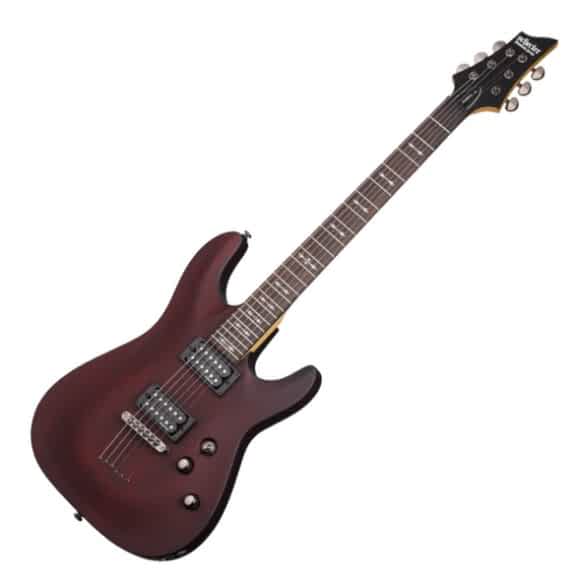
PERFECT FOR: Beginner to Intermediate
FEATURES: Comes with Ernie Ball Regular Slinky .010-.046
OTHER INFO: 24 X jumbo frets provide two octaves and upper fret access.
- Offers a warm, soft sound with plenty of depth.
- High output pickups give energy and push to the amp.
- Coil tap feature allows for sparkling single coil sound.
- Natural neck construction.
- Soft rosewood fretboard offers smooth playing.
- TOM bridge requires regular maintenance compared to other bridges.
- Aesthetic preference for walnut body may vary.
When you click ‘Check Price’, you’ll see there are loads of great places to buy this item. Our personal favorite is Sweetwater for the US, and Thomann and Gear4Music for the UK & Europe.
They are the largest music retailers, with excellent customer service, competitive prices, really fast shipping, and the longest guarantees.
The professional musician who wrote this article combined many things,
from the product build, manufacturer’s reputation through to feedback
from other users, to create our famous TedScore™.
Schecter Hellraiser C-1
The Schecter Hellraiser C-1 represents the premium end of beginner metal guitars, and I consider it worth every penny. This guitar brings professional features at an accessible price point.
Active EMG pickups set this guitar apart from the competition immediately. The EMG 81/60 combination delivers that modern metal sound you hear on countless albums.
Hellraiser C-1 Specifications:
- Mahogany body with maple cap
- Set mahogany neck
- EMG 81/60 active pickups
- TonePros bridge system
I love how the active pickups eliminate noise while boosting your signal significantly. You get incredible sustain and clarity that passive pickups simply can’t match.
The flame maple cap adds visual appeal and tonal brightness to balance the mahogany’s warmth. The neck-through construction provides excellent sustain and upper fret access for lead playing.
Popular Metal Guitar Shapes and Styles
Metal guitars come in several distinct body shapes that each offer unique benefits for heavy music. The most aggressive designs like V-shapes and Explorers deliver maximum stage presence, while classic shapes provide versatility and comfort.
V, Explorer, and Superstrat Bodies
V-shaped guitars are the ultimate metal statement pieces. They scream aggression and look incredible under stage lights.
The Jackson JS32 Rhoads represents this category perfectly with its sharp angles and menacing appearance. Flying V guitars force you to play standing up, which naturally puts you in a more energetic performance stance.
Explorer guitars offer a similar aggressive look but with better balance. They sit more comfortably against your body than V-shapes while still maintaining that edgy metal aesthetic.
Superstrat bodies are modified Stratocaster designs built specifically for metal. These guitars feature:
- Deeper cutaways for easier high-fret access
- Flatter fingerboard radius for faster playing
- Humbucker pickup routes for higher output
Modern metal guitars in the superstrat style often include features like locking tremolo systems and 24 frets. They’re designed to handle everything from lightning-fast solos to crushing rhythm parts.
Classic Designs: Les Paul and Stratocaster
The Gibson Les Paul remains one of metal’s most trusted workhorses. Its thick mahogany body and maple cap deliver crushing sustain and rich harmonics that cut through heavy distortion.
Les Pauls excel at chunky rhythm playing and singing lead tones. The shorter 24.75-inch scale length creates less string tension, making bends easier and adding warmth to your tone.
The Fender Stratocaster might seem like an odd choice for metal, but many players swear by them. Modern metal Strats come equipped with high-output humbuckers instead of traditional single-coils.
Contemporary Stratocaster designs feature Floyd Rose tremolo systems and modified electronics for metal applications. They offer incredible versatility, letting you switch between aggressive metal tones and cleaner sounds with ease.
Gibson Les Paul

DESIGNED FOR: Pros
COMES WITH: Classic Les Paul design with updated features
FEATURES: Dynamic, vintage, articulate tone thanks to Burstbucker humbuckers
Gibson Les Paul
- Iconic sound
- Great value for money when viewed as a professional investment
- Affordable
- Expensive
- Only good for professionals and advanced players
When you click ‘Check Price’, you’ll see there are loads of great places to buy this item. Our personal favorite is Sweetwater for the US, and Thomann and Gear4Music for the UK & Europe.
They are the largest music retailers, with excellent customer service, competitive prices, really fast shipping, and the longest guarantees.
The professional musician who wrote this article combined many things,
from the product build, manufacturer’s reputation through to feedback
from other users, to create our famous TedScore™.
Essential Hardware and Components
The bridge type you choose affects how your guitar stays in tune and handles aggressive playing. Your fretboard material impacts both tone and playability during those intense metal sessions.
Bridge Types: Hardtail, Tremolo, and Floyd Rose
I always recommend starting with a hardtail bridge for your first metal guitar.
It keeps your strings rock-solid in tune, even when you’re chugging hard.
A hardtail bridge has no moving parts. This means less maintenance and fewer tuning problems when you’re learning.
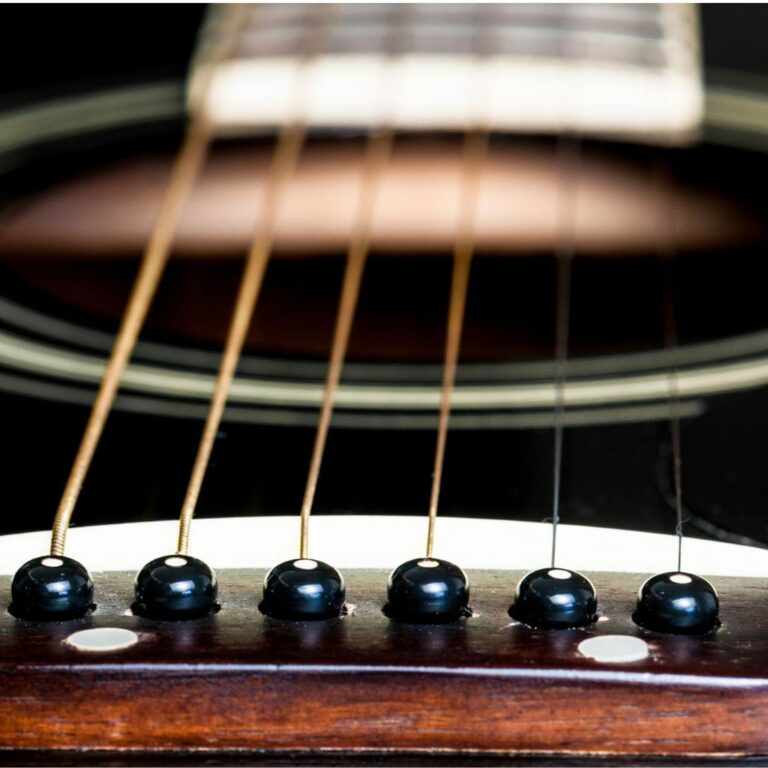
If you want some vibrato effects, a standard tremolo system with a tremolo arm works well. You can add subtle pitch bends to your solos without too much complexity.
The Floyd Rose tremolo is the king of metal bridges. It lets you dive-bomb and pull crazy pitch bends that sound amazing in metal.
But here’s the catch – Floyd Rose systems need more setup time. String changes take longer, and they require more maintenance than I’d recommend for beginners.
Bridge Comparison:
| Bridge Type | Tuning Stability | Maintenance | Best For |
|---|---|---|---|
| Hardtail | Excellent | Low | Beginners, rhythm |
| Standard Tremolo | Good | Medium | Moderate effects |
| Floyd Rose | Good (when set up) | High | Advanced players |
Frets and Fretboard Materials
Jumbo frets and extra-jumbo frets make playing metal much easier on your fingers. They’re taller than standard frets, so you need less pressure to get clean notes.
I find jumbo frets perfect for bending strings during solos. They also help with fast playing since your fingers don’t work as hard.
A rosewood fretboard gives you a warmer, darker tone that works great for metal. It feels smooth under your fingers and looks classic too.
Maple neck guitars with maple fretboards sound brighter and more aggressive. The extra snap cuts through heavy distortion really well.
Rosewood needs less maintenance than maple fretboards. Maple fretboards can show wear marks more easily but they’re easier to clean.
Choosing the Right Tuning and Setup
The right tuning can make your metal riffs sound heavier and more powerful. I’ll show you the most popular metal tunings and help you decide between six and seven string guitars.
Standard and Drop Tunings for Metal
Drop D tuning is perfect for beginners because you only change one string. You lower the low E string to D, making power chords much easier to play.
This simple tuning adjustment lets you play chunky riffs with just one finger. Bands like Slipknot and Avenged Sevenfold use Drop D all the time.
Drop C takes things heavier by tuning all strings down a full step, then dropping the lowest to C. It sounds more aggressive and works great for metalcore and death metal styles.
Popular Metal Tunings:
- Drop D: D-A-D-G-B-E (easiest to start with)
- Drop C: C-G-C-F-A-D (heavier sound)
- D Standard: D-G-C-F-A-D (fuller tone)
You’ll need thicker strings for lower tunings to maintain proper tension. I recommend .011-.052 gauge strings for Drop C and lower tunings.
Six and Seven String Guitars
Six string guitars work perfectly for most metal styles. They’re easier to learn and less overwhelming for beginners.
Seven string guitars add a low B string below the regular six strings. This gives you access to even lower, heavier sounds without changing tuning.
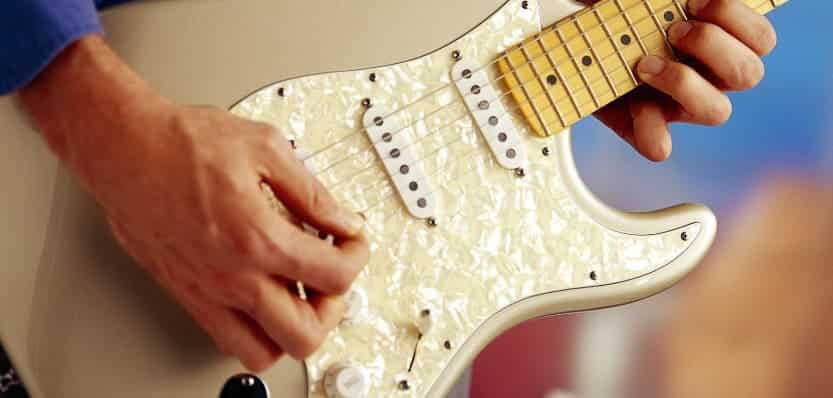
The extra string on a 7 string guitar opens up new chord shapes and riff possibilities. However, it takes time to adjust your playing technique and avoid accidentally hitting the extra string.
Six String Benefits:
- Simpler to learn
- Less expensive
- More song tutorials available
Seven String Benefits:
- Lower range without retuning
- More chord options
- Popular in modern metal
I suggest starting with a six string guitar and switching to seven string later if you want that extra low end.
Playing Metal: Techniques and Getting Started
Learning metal guitar starts with mastering power chords and finding the right distorted tone. I’ll show you how to dial in heavy distortion and use your guitar’s controls to get that crushing metal sound.
Power Chords and Heavy Distortion
Power chords are the foundation of metal guitar playing. They use just two notes – the root and the fifth – which creates a simple but powerful sound that cuts through heavy distortion.
I recommend starting with the basic power chord shape on the low E string. Place your first finger on any fret of the low E string, then put your third finger two frets higher on the A string. This shape works anywhere on the neck.
The beauty of power chords in metal guitar is their simplicity. Once you learn one power chord shape, you can play hundreds of metal songs by just moving it around the fretboard.
Heavy distortion is what gives metal its signature aggressive sound. Turn your amp’s distortion or gain knob up high – don’t be shy about it. The distortion should be thick and saturated, but not so muddy that you can’t hear individual notes clearly.
Tone and Volume Controls for Beginners
Your guitar’s tone control knob affects how bright or dark your sound is. For metal, I usually keep the tone knob around 7-8 out of 10 to get clarity while maintaining warmth.
Rolling the tone knob back to 5 or 6 can help tame harsh distortion. This creates a smoother, more controlled sound that’s perfect for rhythm playing.

The volume knobs on your guitar work differently than your amp’s volume. Your guitar’s volume controls how hard you’re hitting the amp’s input, which affects distortion character.
Try this experiment: set your amp for heavy distortion, then roll your guitar’s volume back to 6 or 7. You’ll get a slightly cleaner tone with less compression, perfect for lighter sections in metal songs.
Volume Settings for Different Sounds:
- Full volume (10): Maximum distortion and sustain
- Medium volume (6-7): Controlled distortion, more dynamic
- Low volume (3-4): Clean tones with edge of breakup
FAQ's
I recommend starting with “Smoke on the Water” by Deep Purple since it uses just one string and simple power chords. “Iron Man” by Black Sabbath is another great choice with its slow tempo and basic chord progressions.
“Enter Sandman” by Metallica teaches you essential downpicking technique. The main riff repeats throughout the song, making it perfect for building muscle memory.
“Breaking the Law” by Judas Priest uses simple power chords and has a catchy rhythm. “Paranoid” by Black Sabbath moves a bit faster but still uses basic chord shapes that beginners can handle.
The Epiphone SG Modern Figured stands out as the top beginner metal guitar with its ProBucker humbuckers and coil-splitting capabilities. It handles high gain well while offering versatile tones for different metal styles.
PRS SE Standard 24-08 offers incredible versatility for players who want one guitar for everything. The Wide Thin neck profile makes it comfortable for fast playing and heavy riffs.
Squier Contemporary Stratocaster HH FR features high-output SQR Atomic humbuckers. The Floyd Rose tremolo system lets you dive bomb and add whammy effects to your playing.
Jackson Dinky Archtop JS32 DKA provides a no-frills metal experience. The mahogany body and Jackson high-output pickups deliver aggressive tones perfect for heavy music.
Humbucker pickups in the bridge position are essential for metal guitar. They handle high gain without the feedback issues you get with single-coil pickups.
I suggest looking for guitars with a 12-inch fingerboard radius or higher. Lower radius necks under 10 inches can be difficult for metal playing.
A 25.5-inch scale length works better for down-tuning than shorter scales. The longer scale keeps string tension tight when you tune below standard pitch.
Look for guitars with 24 frets instead of 22. The extra frets give you more range for lead playing and higher note access.
Locking tuners help maintain tuning stability during aggressive playing. They’re especially useful if you plan to use a tremolo system or bend strings frequently.
YouTube offers tons of free metal guitar lessons from experienced instructors. Channels like JustinGuitar and MartyMusic cover basic metal techniques with clear explanations.
Jason Stallworth’s Guitar Academy provides a complete metal guitar guide for beginners. The lessons cover power chords, palm muting, and essential metal theory.
Online platforms like Guitar Tricks and JamPlay have structured metal courses. They start with basic techniques and progress to more advanced concepts.
Local music stores often offer in-person lessons with metal-focused instructors. Face-to-face instruction helps with proper technique and immediate feedback.
The PRS SE Standard 24-08 sits near the $1000 mark but offers exceptional build quality. It’s versatile enough to handle metal and other genres with equal skill.
Epiphone Les Paul Studio models typically cost between $400-600. They feature mahogany bodies and humbucker pickups that work great for metal.
Ibanez Gio GRG7221 seven-string guitar provides extended range at an affordable price. The extra low string opens up new possibilities for heavy riffs.
ESP LTD EC-256 models offer solid construction around $500-600. They come with EMG pickups that many metal guitarists prefer.
Jackson JS series guitars range from $200-500 and come designed for metal. They feature aggressive styling and high-output pickups.
Ibanez guitars feature slim necks that make fast playing easier. The Wizard neck profile reduces hand fatigue during long practice sessions.
Many Ibanez models come with 24 frets and extended cutaways. This design gives you better access to high notes for lead playing.
The Ibanez Gio series offers affordable entry points into extended range guitars. Seven and eight-string models let beginners explore lower tunings without breaking the bank.
Ibanez pickups are designed for high-output applications. The Infinity series pickups handle heavy distortion while maintaining note clarity.
The company’s reputation among metal legends like Steve Vai and Joe Satriani adds credibility. Many beginners choose Ibanez because their heroes play these guitars.


